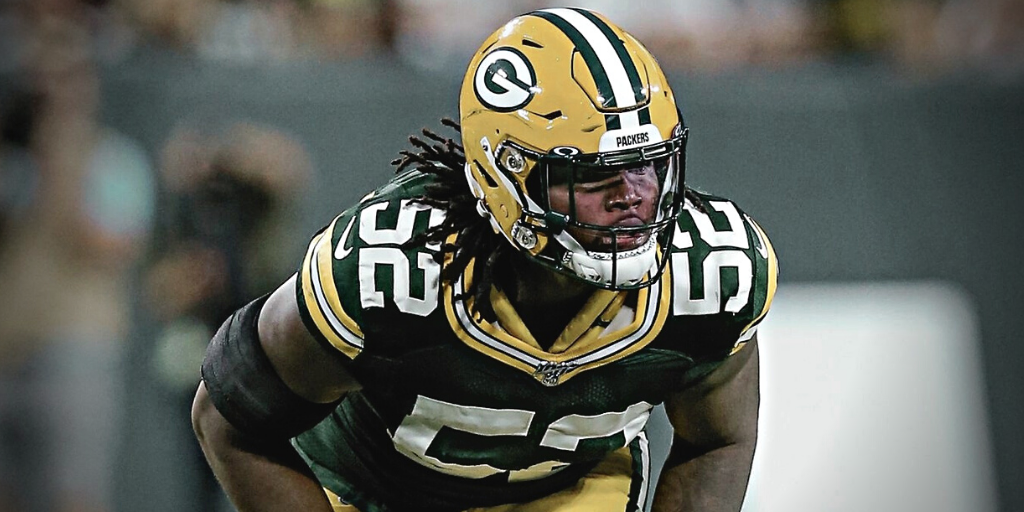What Should We Expect from Rashan Gary in 2021?
Rashan Gary has shown tantalizing glimpses of his potential through his first two seasons. In year three, it’s time for him to take a step towards stardom.
The preseason hype around Rashan Gary has been building for months, and for good reason.
The 12th overall pick in the 2019 draft, Gary has come along somewhat slowly. Lightly used as a rookie, Gary performed well in a larger role in 2020. Given his prodigious athletic gifts, it’s easy to see why he’s often named as a potential breakout start this season.
But that’s a pretty vague bar for Gary to reach, driven as much by feel as anything. What, really, is a star in the NFL anyway? We can do better than that, so let’s set some production expectations for Rashan Gary.
Rashan Gary needs to increase his total pressures
The first measurable area where we should look for improvement (or maybe just increased growth) from Gary is in total pressures. A favorite of Packers outside linebackers coach Mike Smith, total pressures are a measure of every time a pass rusher sacks, hits or hurries a quarterback, providing a more comprehensive picture of how often a defender affects the opposing team’s passing game.
According to Pro Football Focus, Gary increased his total pressures from 16 in 2019 to 46 in 2020, compiling those numbers over 19 games in both seasons. (Pro Football Focus includes postseason games in their counting stats.)
46 pressures in 19 games works out to a little more than 2.4 per game. If Gary can bump that average to 3.5 per game in 2021, he’ll produce about 60 total pressures in the 2021 regular season, to say nothing of what he might compile should the Packers make the playoffs again.
Gary also needs to continue to improve his pass rush consistency
It’s not enough for Gary to simply increase his total pressures, though. He must also continue to grow in the rate at which he produces those pressures.
Rate stats are a much better measure of how well a player is truly performing than sheer volume stats. Here’s why. Consider two running backs: if one carries the ball 50 times in a season, but the other carries the ball 100 times, which player is likely to produce more yards? Obviously, the one with 100 carries, right?
But consider those backs again: if the first back averaged, say, 5.5 yards per carry and the second averaged 2.5, who was more valuable? It’s clearly the first back, right?
The same is true for pass rushers. Total pressures are usually (but not always) a function of how often a given player gets to rush the passer. Pressure rate, on the other hand, measures how often they’re producing relative to the number of times they rush the passer.
Fortunately, Gary seems to be headed in the right direction here. After producing a pressure on 10.6% of his pass rushes in 2019, he increased his pressure rate to 13.2% in 2020, coming up with 46 pressures on 349 rushes.
If he can bump that rate up to about 15%, he’d produce 60 pressures if he rushed the passer 400 times in 2021. Over the course of a 17-game regular season, that works out to just over 3.5 pressures per game, right in line with his earlier growth plan.
How realistic is this?
This is a completely doable jump for Gary. To put some context to these numbers, consider fellow edge rusher Preston Smith.
Before his 2020 drop-off, Smith produced 62 pressures on 456 rushes in 2019 (a pressure rate of 13.6%) and 53 pressures on 468 rushes for Washington in 2018 (a pressure rate of 11.2%). Given that Gary is immensely more athletic than Smith, it shouldn’t be hard for him to produce better numbers — even only slightly better. And I think “slightly better than Preston Smith at his best” is an eminently reachable bar.
What’s more, if Gary can continue to grow in these areas, he’ll probably see a corresponding jump in his traditional box score numbers. Gary has only produced seven sacks through his two NFL seasons, but if he continues to produce pressures at a higher and higher rate, he may very well put up the kind of numbers that would make him a bona fide breakout star — whether you believe in advanced analytics or not.

